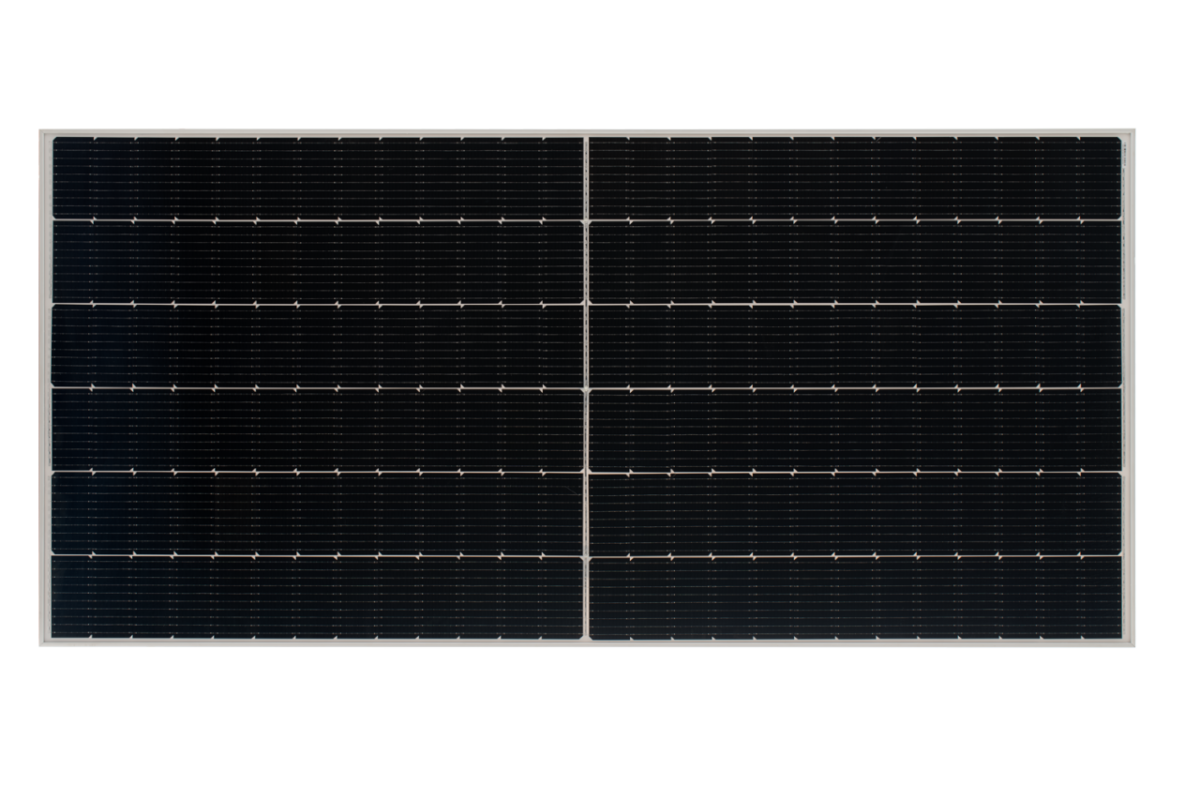PV module manufacturer JinkoSolar plans to increase the production capacity of its new Pro Tiger module series to 10 GW by October. “Some of [the] existing lines will be upgraded to run this new series,” Jinko VP Dany Qian told pv magazine. “In addition, our newly-expanded facilities will start the production of the Pro Tiger panels.”
Thus far, the manufacturer has been coy about the series’ two 530/540 W panels – the 72TR and 72HC – as well as the small-scale-array 60TR panel, which provides a claimed 430 W. However, Jinko has now at least disclosed technical details about the 565-585 W monofacial panel in the range to pv magazine.
The module, which measures 2,411×1,134×35mm, weighs 31.1kg and features 182mm x 182mm 156 p-type monocrystalline cells, is available in five versions with power outputs claimed by Jinko of 565-585 W and reported efficiencies of 20.67-21.40%. Maximum power voltage varies from 43.77 V, for the 565 W panel, to 44.22 V for the 585 W version, according to the manufacturer, while open circuit voltage ranges from 52.97-53.42 V. “The lower open-circuit voltage can increase module numbers per string, which will decrease the number of strings in the system as well as the corresponding tracker, cables and installation costs,” Qian said.
Warranty
The operating ambient temperature ranges from -40 to 85 degrees Celsius, said the manufacturer, and maximum system voltage is 1,500 V. The panel has an anodized aluminum frame and 3.2mm of tempered glass with an anti-reflection coating. Its junction box has an IP 68 rating.
Jinko offers a 12-year product warranty and 25-year power output guarantee. Annual linear degradation over 25 years is indicated at 0.55% while degradation for the first year of the panel’s lifetime is capped at 2%.
As previously revealed by the company, the module uses tiling ribbon and multi-busbar technology. “Thus, it can reduce the number of strings in the condition of [the] same DC/AC ratio,” said Qian. “The cost of [the] corresponding DC cables, tracker numbers, combiner boxes and their installation – even the land [required for] PV – will be cut down accordingly.”
Logistics
Qian said the Pro Tiger fits exactly into the company’s current packaging and logistic methods. “For the 580 W product, it may need some guidance or some special gadgets to unload.” she said. “For the 540 W model, it is not a problem at all for logistics, handling and installation. It is universally compatible for any supporting structure.”
Asked whether Jinko aims to pass the 600 W-output module threshold, Qian said the manufacturer is planning to produce panels beyond that limit, although not by using bigger wafers. “Right now, we can’t forecast the eventual size of panel,” she said. “It depends on [a] bottleneck of issues, for example glass spec, container condition, [a] labor handling limit, as well as compatibility with inverters and racking systems.”
The Jinko VP added, the Pro Tiger module series will become the company’s main revenue contributor in 2022, surpassing the Tiger 475 W panel.
This article was amended on 15/07/20 to reflect Dany Qian is a woman, not a man, as previously reported.
This content is protected by copyright and may not be reused. If you want to cooperate with us and would like to reuse some of our content, please contact: editors@pv-magazine.com.




I am interested to know further development in PV. While introducing new more efficient products a guideline policy for role out of previous models should also be devised to protect the investment of users.
Sorry we are unable to consider ANY CHINESE MADE PRODUCTS OR SERVICES…. AS PER GLOBAL BOYCOTT RIGHT NOW …..
I would urge pvmagazine to desist from covering any Goods or Services from China while this BOYCOTT BY, FOR & OF THE PEOPLE OF DEMOCRACIES IN IS FORCE…
China has “shot themselves” in the foot by their Crude, Inhumane, Ruthless and Criminal Behaviour… around the Globe… COVID is just ONE glaring example….
Hi Ajay,
Thanks for your comment. pv magazine is unaware of a global boycott of Chinese goods. What sort of global body would be able to unilaterally enforce a trade boycott on every nation on earth, overriding its sovereign powers? Maybe we should get this mysterious entity to work on driving the energy transition.
Please name a single product which contains no Chinese MANUFACTURED PRODUCTS? Not automobiles, not appliances, not batteries, not solar products. Lot’s of things are assembled in America, very few are manufactured here. Why doesn’t America step up their game and manufacture these types of products? America DOMINATED world manufacturing in the 1940’s, 50’s and 60’s. Our own government betrayed us. Stop complaining about China’s domination of manufacturing. WE ARE TO BLAME, NOT CHINA.
Your right Ajay
@ Max Hall
When read the boycott comment, I thought I missed something. China is not a afraid to rock the boat. Sometimes, I think they do it just to see who’s awake. Other times, they’re putting a stick in the spokes. Just like every other govt does with their peers. When any govt gets too egregious, the rest of world tends to respond proportionally. So I wondered, “what’d they do ?”
Then I read your response.
Well played, sir!